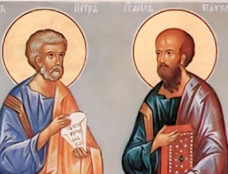
French masterpieces renamed after black subjects in new exhibition
French art masterpieces have been renamed after their long-overlooked black subjects in a ground-breaking new Paris show on the representation of people of colour in art, The Guardian reports.
Edouard Manet’s Olympia, the scandalous painting of a naked reclining prostitute that marks the birth of modern art, has been renamed Laure after the woman who posed as her black maid.
Several other major works have been similarly renamed by the curators of Black Models: From Gericault to Matisse – which opens on Tuesday at the Musée d’Orsay – after they tracked down the identities of their sitters.
The enormous exhibition has paintings by Delacroix, Gauguin, Picasso, Bonnard and Cézanne and tackles the depiction of black and mixed-race people in French art from the country’s final abolition of slavery in 1848 until the 1950s.
American scholar Denise Murrell said it revealed how black people played a major role in the birth of modern art in Paris but were written out of the story.
From Jeanne Duval, the “Black Venus” who was mistress and muse to the poet Baudelaire – and who was also painted by Manet – to Cuban singer Maria Martinez and the novelist Alexandre Dumas, the author of The Count of Monte Cristo, Murrell insisted “there was a black presence in avant garde circles when artists and writers defied convention” when “interracial socialising” was taboo.
But the influence of people of colour has been eclipsed from art history by racism and stereotyping, Murrell said. Instead their identities were hidden behind “unnecessary racial references” such as negress or mixed-race “mulatresse” – which comes from the French word for mule.
Murrell and her fellow curators have revealed the subjects’ real names in new titles for the show, “which would have been the case if they had been European”, she added, with the historic titles relegated to the second line.
The tone is set from the stunning opening Portrait of a Negress – renamed Portrait of Madeleine for the show – painted by Marie-Guillemine Benoist in the short period between the French Revolution’s abolition of slavery in 1788 and Napoleon reinstating it in 1802.
“For more than 200 years there has never been an investigation to discover who she was – something that was recorded at the time,” Murrell said. “This is emblematic. It was art history that left them out. It has contributed to the construction of these figures as racial types as a opposed to the individuals they were.”
Black people featured in some of the greatest artworks of the period, with Gericault giving three the starring roles as desperate shipwrecked sailors in his masterpiece, The Raft of the Medusa. The painter’s favourite model, an art-loving Haitian called Joseph, the heroic figure on the raft, finally gets his place in the limelight in the show.
But it is Manet’s black maid who is the real star.
She appears in no less than eight takes, including two modern versions: Olympia in Black Face by the American Larry Rivers and the Congolese artist Aimé Mpane’s Olympia II, which turns the tables with a white servant offering a bouquet containing a skull to her black boss.
The exhibition runs until 21 July.
Newsfeed
Videos






























